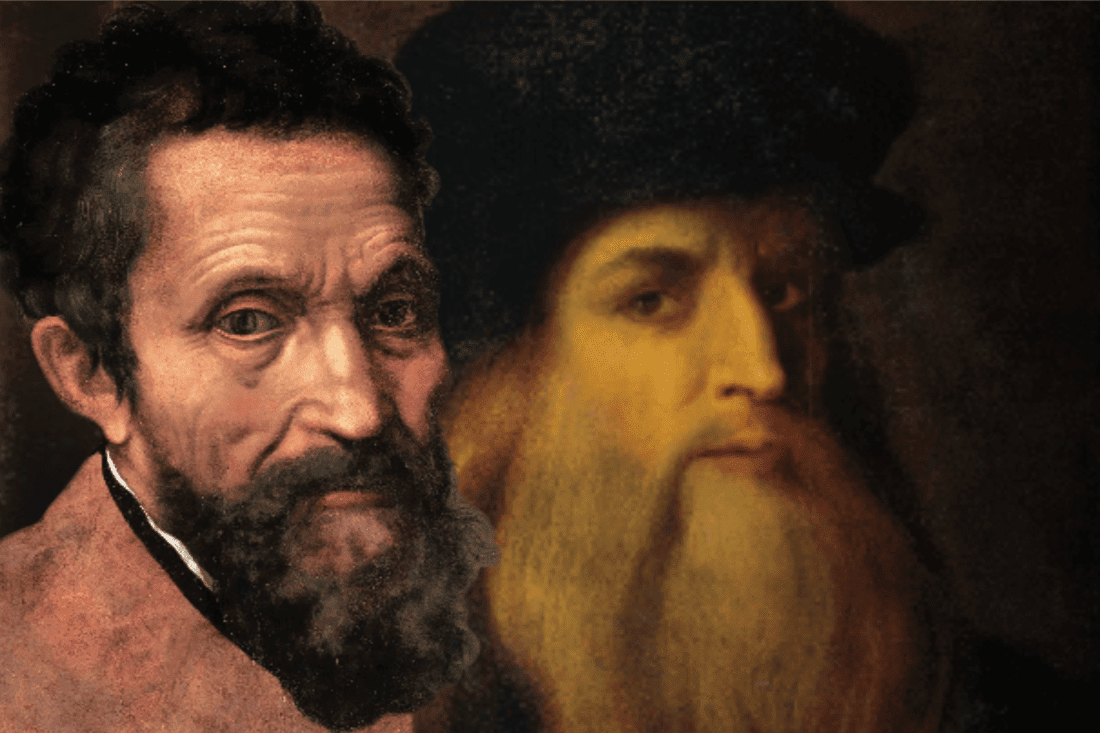This article compares and contrasts the lives, art, influence, and personalities of two of the most notable Renaissance artists, Leonardo da Vinci and Michelangelo Buonarroti. Both artists had different backgrounds, approaches to art, and personalities, but they shared a passion for excellence and pushing the boundaries of what was possible. Leonardo was known for his sfumato technique and subtle expressions, while Michelangelo was known for his muscular figures and dramatic lighting. Both artists influenced their contemporaries and successors, and their works continue to inspire and captivate us today.
Leonardo da Vinci vs Michelangelo: A Study of Two Renaissance Masters
Introduction
The Renaissance was a period of great artistic and scientific advancements that saw the emergence of many great artists. Among the most notable were Leonardo da Vinci and Michelangelo Buonarroti. These two geniuses are often pitted against each other in the world of art, with debates raging on which one of them was the greatest. In this article, we will compare and contrast the art and lives of these two Renaissance masters.
Background
Leonardo da Vinci was born in 1452 and was the illegitimate son of a notary and a peasant girl. He had a passion for art, science, and engineering that saw him become one of the most influential artists of all time. Michelangelo, on the other hand, was born in 1475, and his father was a banker, and his family was very wealthy. He, too, was interested in art, but he was equally proficient in sculpture, architecture, and poetry.
Artistic styles
Although both artists were highly skilled, they had different approaches to art. Leonardo da Vinci was a master of the sfumato technique, which involved creating a subtle transition between tones to achieve a soft and hazy effect. His works, such as the Mona Lisa and The Last Supper, are characterized by their subtle gradations of light and shadow, and his paintings are known for their mysterious expressions and enigmatic backgrounds. Michelangelo, on the other hand, was known for his muscular, highly detailed figures that conveyed a sense of power and strength. His works, such as the David and the Sistine Chapel ceiling, are notable for their intensity and dramatic lighting.
Influence on their contemporaries and successors
Both artists influenced their contemporaries and successors in different ways. Leonardo’s art was highly sought after during his lifetime, and his techniques and style influenced many artists, including Raphael and Rubens. Michelangelo’s works were recognized as masterpieces during his lifetime, and he was highly respected for his artistic and sculptural talent. His ideas and designs influenced many artists, and his influence can be seen in the works of Baroque artists such as Bernini and Caravaggio.
Personality traits
Although they were both highly creative and prolific, they had different personality traits. Leonardo was known for his gentle and curious nature, and he had a keen interest in science and engineering. His journals, which contained sketches and notes on a wide range of subjects, including anatomy, painting, botany, and geology, were his life’s work. Michelangelo, on the other hand, was known for his fiery temper and moody disposition. He was highly disciplined and demanding of himself and others, which sometimes resulted in conflict with his patrons and colleagues.
Conclusion
In conclusion, both Leonardo da Vinci and Michelangelo were masters of their craft, and their contributions to art and culture are immeasurable. Although they had different approaches to art and different personalities, they shared a passion for excellence and a determination to push the boundaries of what was possible. Their works continue to inspire and captivate us today, and they remain two of the greatest artists of all time.
